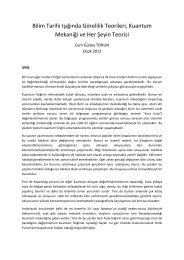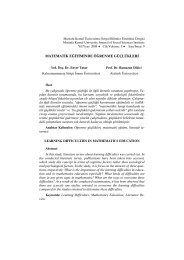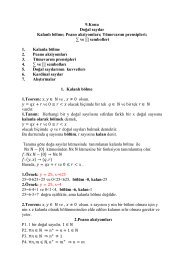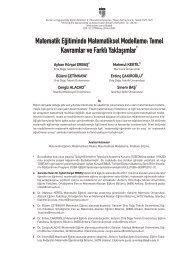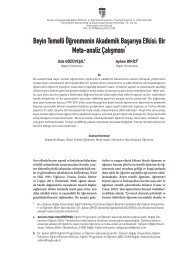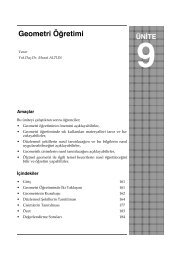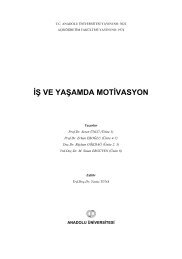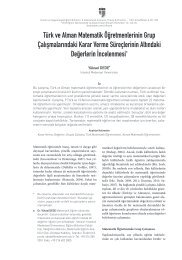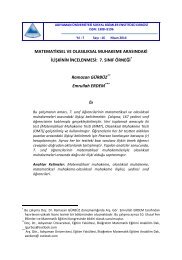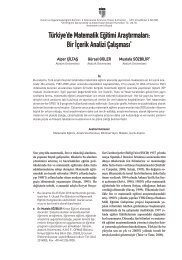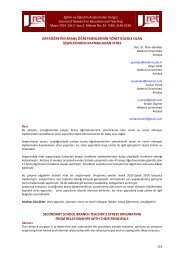Ufuk-U_niversitesi-SBE-Dergisi-S-ayı-5-kopya
Ufuk-U_niversitesi-SBE-Dergisi-S-ayı-5-kopya
Ufuk-U_niversitesi-SBE-Dergisi-S-ayı-5-kopya
Create successful ePaper yourself
Turn your PDF publications into a flip-book with our unique Google optimized e-Paper software.
Table 2 : Means and Standard Deviations for ASPH-SASPH-SN M SDFacultyArchitecture 26 67.46 9.70Economics and AdministrativeSciences 50 69.72 9.13Arts and Sciences 62 70.16 8.47Engineering 211 65.36 9.08Education 223 70.94 10.48Age18 44 73.11 10.9019 68 71.11 8.3320 98 68.44 9.2621 217 68.00 10.0422 97 67.27 9.5123 27 65.63 10.7624 13 64.546 10.6325 5 69.60 10.9726 3 66.00 20.07The students of the Faculty of the Education (M = 70.94; SD = 10.48) scored higherthan the students of the other faculties and students of the Faculty of the Engineering had thelowest mean score (M = 65.36; SD = 9.08) among all faculties.2.2 InstrumentsSociodemographic Information Form: The form will include demographic questionsabout age, gender and faculty.The Attitudes toward Seeking Psychological Help—Shortened(ASPH-S): The ASPH of Fischer and Turner (1970) which was developed to measureattitudes toward help seeking adapted to Turkish participants by Türküm (2004) will be used.The ASPH-S has 18 items which are asked to be rated on five- point Likert-type scalesranging from 1 (strongly disagree) to 5 (strongly agree). High scores indicates high positiveattitude toward seeking psychological help (Türküm, 2004).The reliability coefficient of thescale was found as in the scale .88 for the total scale and subscales .76 for the first factor thatinclude seven items which indicates confidence in taking psychological help, .77 for secondfactor that include seven items which indicates beliefs about getting psychological help, .76for third factor that include seven items which indicates endurance against labeling , and .68for fourth factor that include six items which indicates self disclosure (Türküm, 2004). Testretestreliability was .99. Discriminative validity analysis was found sufficient by examiningthe difference between two groups which were formed with students who has receivedpsychological help and who did not. The results showed significant differences between twogroups (Türküm, 2004).32





